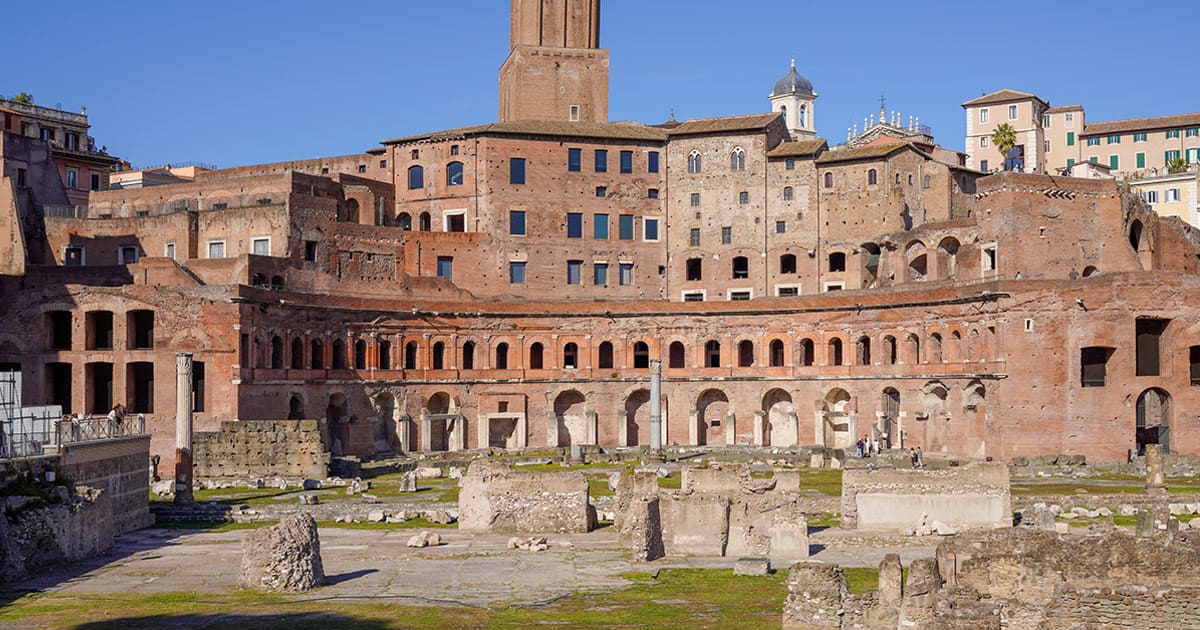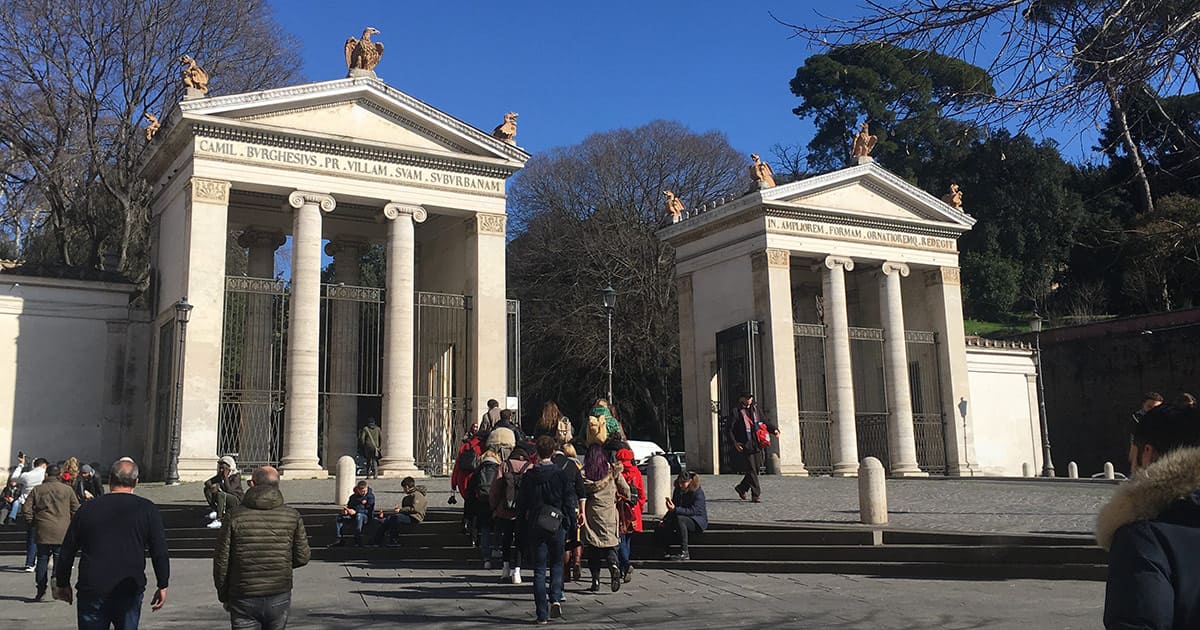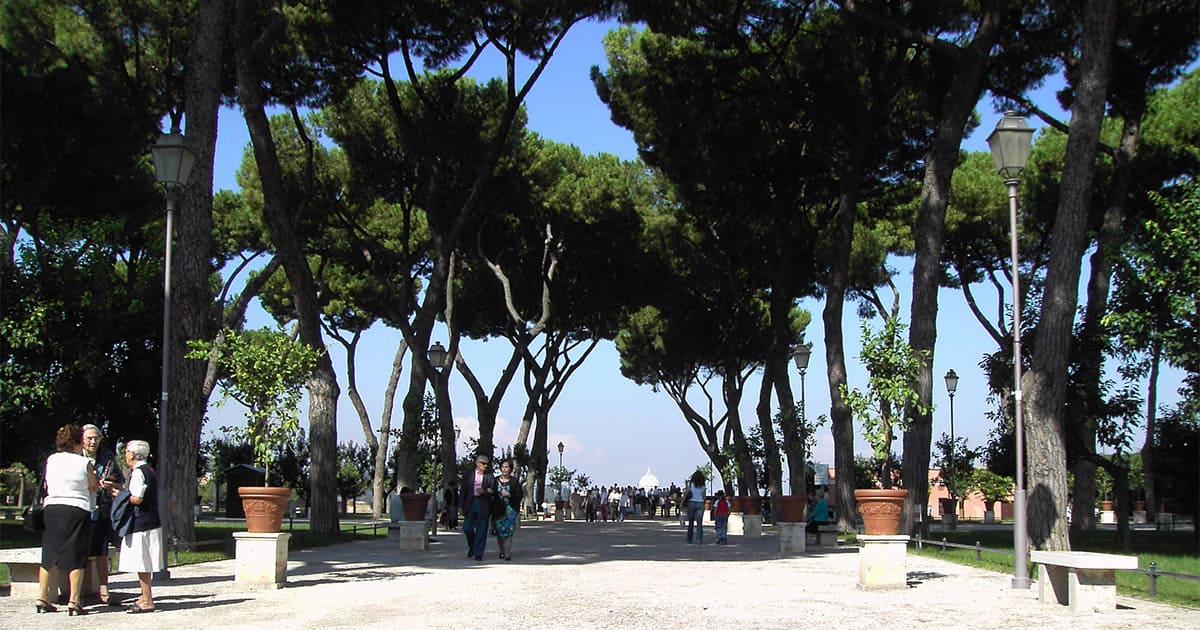Imagine stepping back nearly 2,000 years to stroll through bustling Roman arcades filled with merchants, goods, and the hum of daily life. The Trajan’s Market—part of the magnificent Trajan’s Forum—is one of the most fascinating archaeological sites in Rome. Believed to be the world’s oldest shopping mall, this monumental complex offers a window into the commercial and administrative life of ancient Rome. Today, visitors can experience its history through a Trajan’s Market tour with Kirba Tours, enjoying the comfort and insight of a golf cart tour in Rome guided by expert professionals.
The Origins of Rome’s First Shopping Complex
Built between 100 and 110 AD under Emperor Trajan and designed by the celebrated architect Apollodorus of Damascus, the Trajan’s Market was an architectural marvel of its time. Constructed in a semicircular layout against the slope of the Quirinal Hill, it was both functional and elegant. The multi-level structure combined commercial spaces, offices, and storage rooms—all made from durable Roman concrete and brick.
Though often described as an early shopping mall, recent studies suggest that many of the rooms once served administrative purposes for the emperor. Regardless of their exact function, the complex reveals the sophistication of ancient Roman markets and their vital role in urban life.
Architecture and Design
The market’s grand central hall, covered by a concrete vaulted ceiling supported by piers, demonstrates the Romans’ engineering genius. This innovative design allowed both ventilation and natural light, making it comfortable for visitors and workers alike. The structure was adorned with marble floors, decorative columns, and frescoes—reminders of the empire’s prosperity and artistic flair.
Along the Via Biberatica, one of the most picturesque ancient streets preserved in Rome, visitors can still walk where Roman shopkeepers once sold goods and taverns served local wine. The name “Biberatica” derives from the Latin word bibo, meaning “to drink,” suggesting this street was lined with taverns and grocers catering to citizens and travelers.
From Ancient Market to Medieval Fortress
Over the centuries, the Trajan’s Market adapted to new uses. During the Middle Ages, it became fortified with defensive towers such as the Torre delle Milizie, a striking medieval landmark still visible today. Monastic communities later occupied the area, and in the 16th century, the complex was partially converted into a convent. When Rome modernized in the late 19th and early 20th centuries, extensive restorations revealed the site’s ancient splendor once more.
The multi-layered history of the market reflects the city’s ability to evolve while preserving its past—a theme that continues to define historic Rome today.
The Museum of the Imperial Fora
Today, the Museo dei Fori Imperiali (Museum of the Imperial Fora), inaugurated in 2007, occupies much of the ancient complex. Visitors can explore exhibitions dedicated to Rome’s imperial forums, featuring sculptures, inscriptions, and architectural fragments that once adorned Trajan’s and other emperors’ monumental projects.
From the museum’s terraces, breathtaking views extend across the Trajan’s Forum and the nearby Vittoriano monument, making it one of the most scenic archaeological spots in the city. It’s easy to imagine the hum of ancient life that once filled this space—traders calling out their prices, citizens exchanging coins, and officials managing the logistics of the empire.
Exploring Trajan’s Market by Golf Cart
Because the Trajan’s Market is part of a broader archaeological zone, it can be best explored as part of a guided golf cart tour in Rome. With Kirba Tours, visitors can comfortably navigate the surrounding sites—including the Forum of Augustus, Trajan’s Column, and the Colosseum—without the strain of long walks or crowds.
A private guide in Rome adds depth to the visit, explaining how the markets functioned, where free wheat was distributed to citizens, and how commerce and politics intertwined in daily Roman life. Each stop reveals another layer of the city’s evolution—from imperial grandeur to medieval transformation and modern rediscovery.
Plan Your Visit
The main entrances to Trajan’s Market are located at Via Quattro Novembre 94 and Piazza Madonna di Loreto, just a short distance from Piazza Venezia. The site is open year-round, offering guided tours and special exhibitions. For those eager to experience Rome archaeology up close, the market is a must-see destination that bridges the ancient and modern worlds.
Whether you’re a history lover, an architecture enthusiast, or simply curious about how Romans lived, worked, and shopped, a visit to Trajan’s Market is unforgettable. Combine it with a golf cart tour of Rome for the perfect blend of comfort, discovery, and timeless beauty.
By NikonZ7II – Own work, CC BY-SA 4.0, Link




